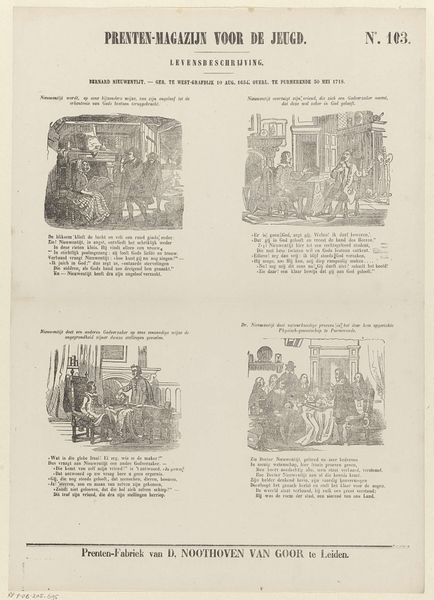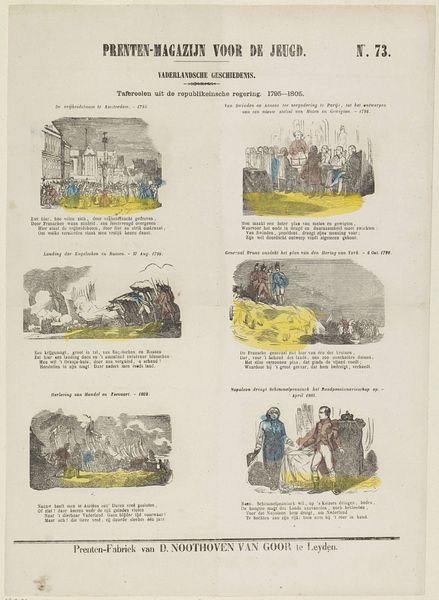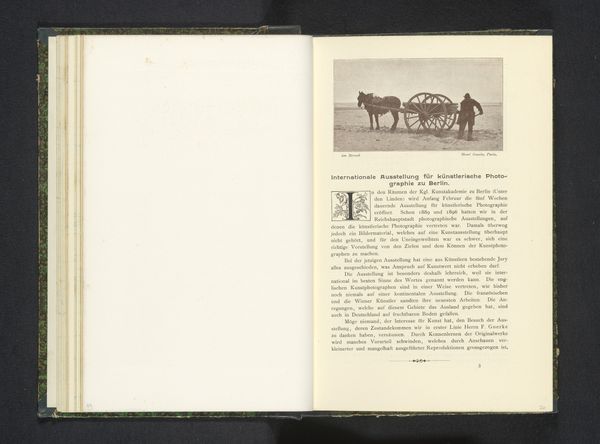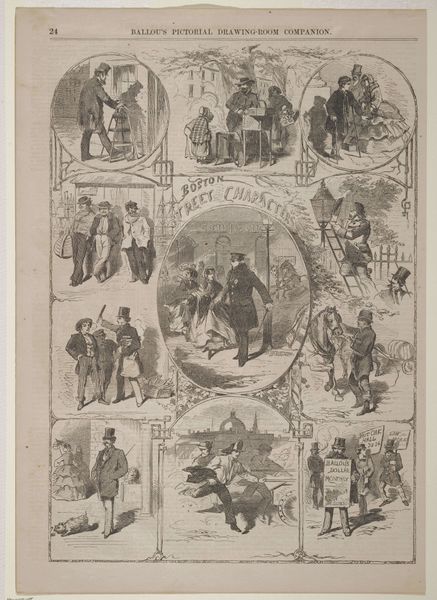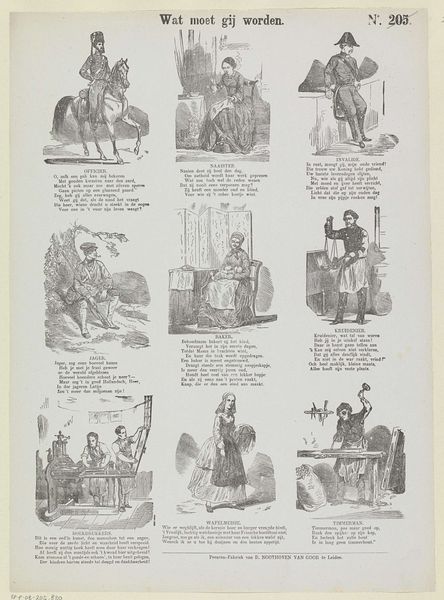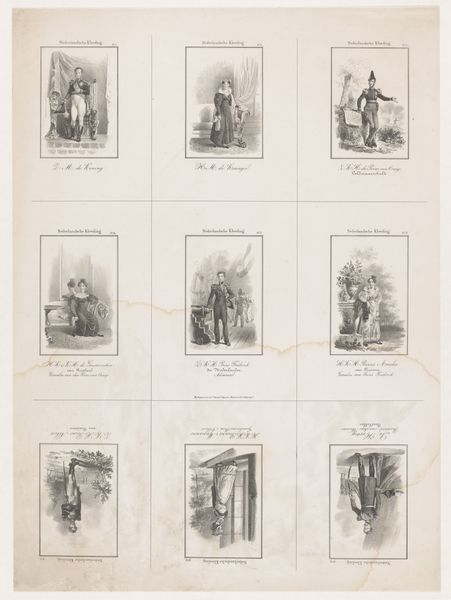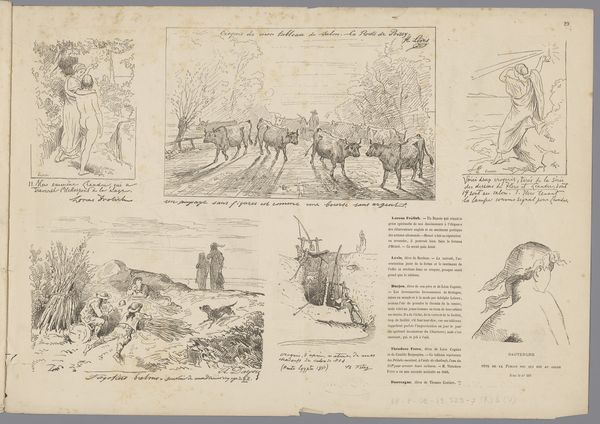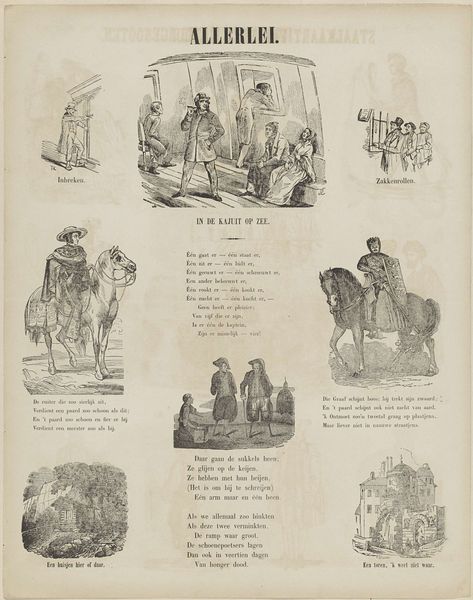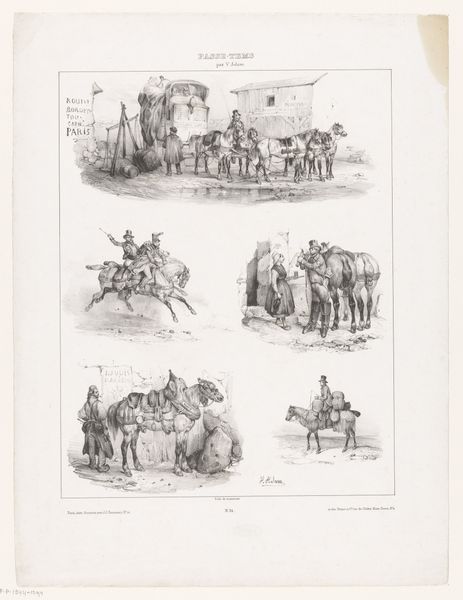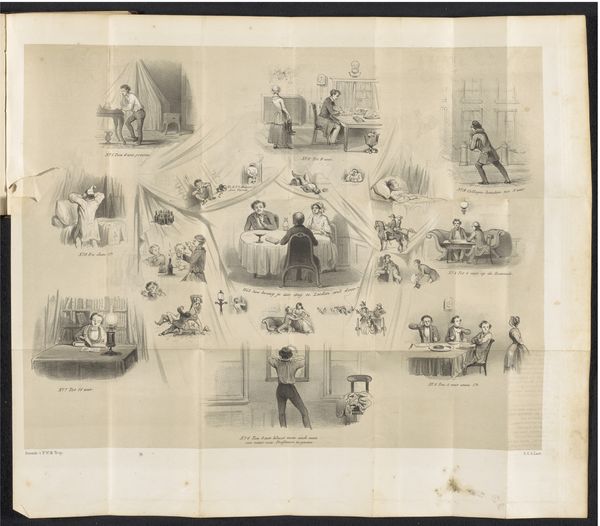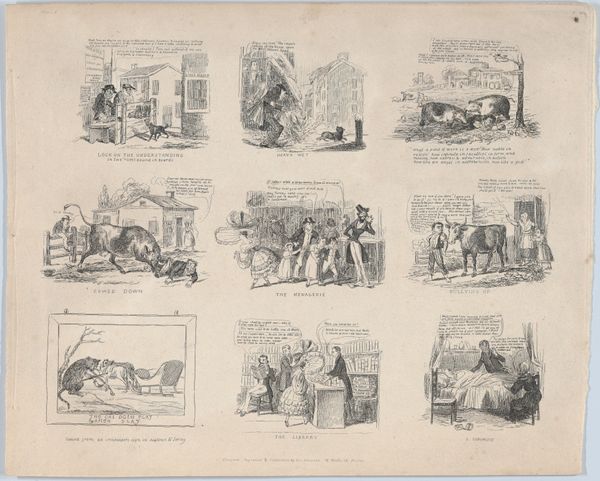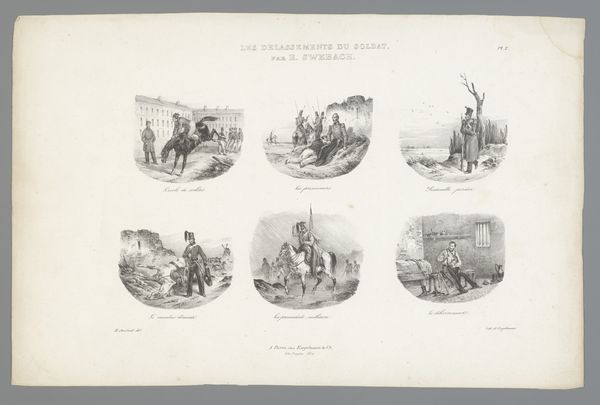
drawing, print, paper, ink
#
drawing
#
narrative-art
#
dutch-golden-age
# print
#
modern-moral-subject
#
caricature
#
paper
#
ink
#
line
#
genre-painting
#
academic-art
Dimensions: height 343 mm, width 392 mm
Copyright: Rijks Museum: Open Domain
Curator: Here we have a lithograph titled "Spotprent in Leidse studentenalmanak, 1853," dating back to 1853. It comes from the Rijksmuseum collection and is credited to an anonymous artist. It is quite busy and appears to be printed on paper using ink. Editor: It’s wild! It feels like looking at a collage of someone’s really strange, slightly anxious, but ultimately funny thoughts. Visually, it bounces around like mad—so many mini-scenes packed together! Curator: Indeed. The piece is quite dense in its semiotic representation. Note the composition: discrete vignettes each presenting its own micro-narrative. This multi-paneled format is very deliberate. Each segment offers a distinct comment. Editor: It almost feels like a dream sequence—disjointed but related by some hidden logic. The way the scenes are rendered is so charmingly awkward. I mean, that dog standing on its hind legs! There’s something delightfully absurd about it. Curator: I understand. The drawing deploys academic artistry to reflect moral and genre elements—though not entirely successfully if we are measuring proficiency. Consider the recurring theme of students behaving badly…drinking or general impertinence, though conveyed with subtlety through careful detail. The text below each scene also adds to a complete narrative when understood collectively. Editor: Right! You can sense the rebellious energy, which, let's face it, hasn’t really changed all that much. I bet the students reading this back in the day felt both mildly chastised and secretly thrilled. There's almost an anticipation of fun being poked. Curator: Undoubtedly! But its cultural context and intended reception have evolved in a completely new manner for later generations, but what does it mean now without them, without that intrinsic cultural understanding? Editor: Well, I’m definitely getting a kick out of it. I wonder what future audiences will see in all of this, though.
Comments
No comments
Be the first to comment and join the conversation on the ultimate creative platform.

